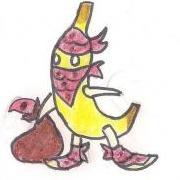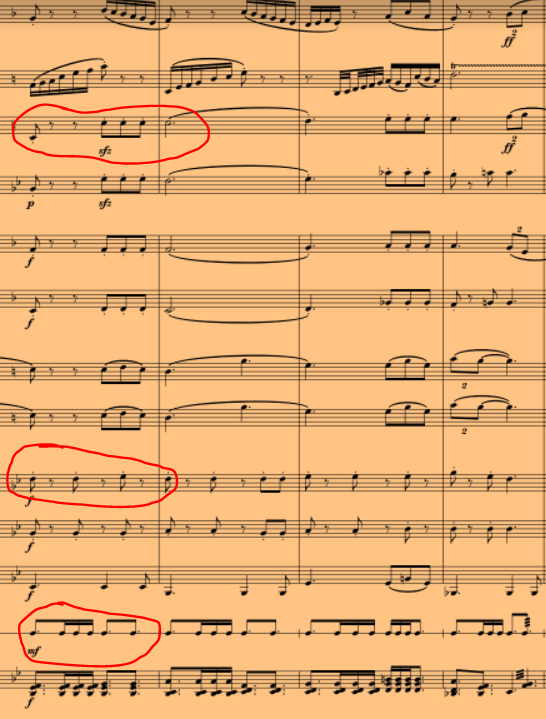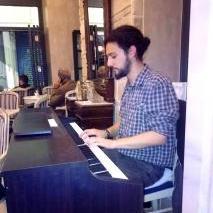Leaderboard
Popular Content
Showing content with the highest reputation on 12/31/2020 in all areas
-
hello everyone, I am back, this is my new piece in Japanese traditional style, hope you like it. instrument: koto & piano koto is a kind of picking string instrument the video: https://www.bilibili.com/video/BV1rA411s71K/1 point
-
Comments from the composer: "The theme follows a simple A-A’-B-A structure as an abridged version of the original Waltz of the Rainbow-coloured flowers by Takashi Yoshimatsu. The theme reorchestrated in the variations follows a mainly violin melody with the cello and piano largely as accompaniment. The theme’s tempo marking is Allegro con Expressivo and is in D minor. The following variations are in the ascending chromatic scale. Variation 1: Allegretto con Spirito in D# minor How the Theme was developed: Heterophonic texture in A section, with all 3 instruments playing the theme at different rhythms and embellishments. In B section cello continues with B section of the theme, violin and piano playing in antiphonal texture. Concepts Explored: Heterophony, Antiphony, Martele strokes Variation 2: Presto in E Minor How the Theme was developed: Simple variation with strings playing pizzicato and piano playing the theme with octave leaps. In B section, violin and cello play pizzicato offbeat from one-another. Concepts Explored: Pizzicato Variation 3: Andante con Doloroso in F Minor How the Theme was developed: Took on passacaglia form with new melody composed based on the theme’s chord progression, the 8-bar melody is varied, with the B section an antiphonic section where all instruments take turns playing the melody. Concepts Explored: Antiphony, Spiccato Variation 4: Vivace, Quasi Swing in F# Minor/A Major How the Theme was developed: The rhythm of the theme is altered using syncopation to imitate a swing jazz style. Violin takes the melody with chordal accompaniment in the piano and cello imitates the walking bass. Concepts Explored: Walking Bass, Syncopation, Added 9th Chords Variation 5: Allegro con Lyricoso in G minor How the Theme was developed: The theme takes on the form of a canon, with all 3 instruments playing slight variations of the theme against one another, two bars apart, making this variation sound like a fugue. Concepts Explored: Canon Variation 6: Andante con Cantabile in G# minor/B Major How the Theme was developed: The piano plays the chordal progression of the theme throughout. In the A section, a new melody on top of it played by the cello. The violin plays spiccato counter-melodies in the high registers. In the B section, motifs are developed and explored with instruments taking turns to play the melody. Concepts Explored: Antiphony, Spiccato Variation 7: Vivace in Strict Tempo in A Minor How the Theme was developed: The strings play chords on multiple strings using martele strokes against the theme played on the piano which is altered to be in 2/4. The left hand of the piano plays octaves throughout. Concepts Explored: Martele, Multiple Stops Variation 8: Andantino piu calmo in B-flat Major How the Theme was developed: Glissando is extensively used in the strings (although not audible in the mp3 file due to playback issues). A new melody is played on top of the Theme’s chord progressions in the A section. In the B section, the theme’s B section is played as the countermelody to a new melody, where all 3 instruments take turns playing the new melody. In addition, modulations to D Major are also explored. Concepts Explored: Glissando Variation 9: Adagio con Grazioso in B Minor How the Theme was developed: The cello plays an inverted form of the theme with the piano playing running notes in high registers as the countermelody. The violin plays the accompaniment with natural harmonics and double stops in the B section. Concepts Explored: Inversion, Natural Harmonics, Double Stops Variation 10: Vivace con Agitato in C Minor How the Theme was developed: The variation takes on an impressionistic style with its sudden dynamic changes and quick changes in tone colours. In the A section, the theme is played in left hand of the piano while strings plays tremolo doubling one another in compound third intervals. In the B section, the theme is alternated between the left and right hand of the piano with motifs thoroughly explored, with the theme serving as the countermelody to the strings taking over the melody. Concepts Explored: Impressionism, Tremolo Variation 11: Andante con Lyricoso How the Theme was developed: A new 4-bar melody is played based on the theme’s chord progressions using the pentatonic scale, and varied with reiterations of the melody on different instruments. The B section of the theme is completely modified with a heterophonic version of the new melody, with all instruments playing the melody in different rhythms and embellished. Concepts Explored: Pentatonic Scale, Heterophony The piece rounds off with a short recapitulation of the theme with the violin and cello taking turns playing the melody."1 point
-
I really like the double time sound, not sure what it is called starting at second 44. During the intro, the melody reminded me of building into something remeniscent of "for he's a jolly good fellow". It just sounds familiar, not sure if anyone else is getting that. But hey, I really enjoyed listening.1 point
-
No, not at all... I listened to them, but couldn't see the link... Thanks for the comment, will try to improve on that. Thanks Luis, this is very useful feedback and encouraging. I think I will have to stick to this "fantasia" style for quite some time (for the lack of constraints, I admit :-) Good to have some feedback on that, not so easy to work out when you're too involved... Same remark as the previous one, thx for the constructive feedback. Are you referring to the part up to 0'54 only or to the whole section up to 1'12? I'm not sure I understood the term "figuration"... Did you mean the accompaniment? Thanks for listening and for the comments, very much appreciated!1 point
-
Hi Malum, What I liked most: * the variations at around 1'00, then at 1'20 What I liked less: * the introduction (up to 1'00) is a bit too long and repetitive (especially the accompaniment) * overall, too few variations (the theme is too often repeated, without major changes) * the end was really too brutal (it feels like it's not been completed) Thanks for sharing!1 point
-
@malumCompositor Hey there. First of all- don't think bad of your orchestration. That's the way you want it, if it's special it's good because that's the way you see it and not someone else. One thing you should consider though is that the rarer the orchestration the harder it would be for you to arrange a performance. *In my opinion- it's too monotonic. In a few aspects actually. -Please make some accent in the percussion. It is a march already, with no accents it sounds just a little more complex than a metronome. -There is no rise and fall in the overall of the piece. -It seems as if every instrument narrows to a very specific place in it's range, when you could have achieved more if you expanded it a little. (look at the horn for example. You keep revolving around the lower-middle range. Why not let him express himself with some higher notes?) *Some places seem to miss the bass line, it feels as if we have... no ground, you might say? *I believe that you should give more place to your organist- enormous blasting chords, use of the bass pedals etc. One sec I'll give it another listen and see if anything else comes up. *Same goes for the guitar- have you considered overdrive? Chord streams? *Ah! of course! It just came up to me crystal clear- the thing that bothers me the most is your use of rhythm. It seems as if it consists entirely of eights, quarters, halfs and wholes, no syncopes that I've noticed and they all play similar rhythms to one another. Here, have that: The three different rhythms go on simultaneously without weakening one another, the other way around- they add variety and texture. Try adding more rhythms, syncopes, etc. Truely hope that was helpful, If you want to read and listen to the whole thing I'll leave out a link for you. https://www.youngcomposers.com/t38585/my-first-work-for-a-full-orchestra/?tab=comments#comment-11866863871 point
-
Hi! I appreciate that you took the time to craft a lengthy reply! Hmm, to elaborate on what I felt was a bit pedestrain, it was not the tempo. I would say possibly the playing techniques used is one of the main parts that I felt was a bit pedestrain. Maybe you could include more styles of playing techniques? I will draw some examples from the strings your orchestration was mainly using strings. You could have included different playing techniques especially given the strings' wide range of such. For example, pizzicato, glissando, harmonics, ponticello, spiccato, martele, marcato, sul tasto, you get the idea. I feel the piece can be elevated to an even higher level if you included such techniques. Especially with the midi simulation where the sound of arco strings started to become a bit grating, it would have been nice to have say a pizzicato in the middle. Even say a simple change in say bowstrokes such as a slur-staccato rhythm, tenuto slurs which make it sound half detached would have been very interesting. In addition, maybe including a rhythmic motif outside of the theme that is easy to latch on to could help? It would provide some continuity especially in a medley where more continuity is needed rather than a theme and variations, some sort of continuity other than just the theme would have helped. In addition, the note values you used were often similar throughout the medley and unchanged for most of theme, and for a piece that needs to develop the theme, that could have been far more explored. Another point I found slightly pedantic was the register. You took a very safe route with the registers of instruments, especially with strings I would say. You could have included a cello melody say in the treble register or violin playing very high notes. You could afford to be more adventurous in your instrumentation. Also, I forgot to mention in the first reply, the articulations could have been improved. For example, m. 65-86, coming as a string player myself I feel the quavers in the strings would be better off slurred. I would have preferred it if you mixed up the fast and slow sections so that they're alternating, because it will draw out more contrast than say going from the slowest to the fastest material. Yea, I think I did not word it properly in my first reply, my apologies. The countermelody is there but needs to be more distinct. I would say that while there is countermelody, the issue is more in the orchestration and instrumentation. The countermelody could have been better executed and be made more distinct, yet it should be more memorable so that it really stands out and feels more like an independent voice in the middleground. This may have due to the midi simulation, but that was my thought after listening through it again. Maybe what you could do is make the background softer? Or make it less interesting so it does not hog the attention of the middleground. Alternatively, you could alter the register so that the countermelody is in its own unique register. Especially since your instrumentation has extensive doubling and many parts played in the same register, this is just going to muddle the sound of individual instruments and make the countermelodies and canonic imitations you mentioned get muddled and unintelligible. I would also say that you could add more instruments into the background to make the background sound richer. I hope that clarifies some stuff!1 point
-
1 point
-
There are some good ideas in this like canonic imitation between the highest and lowest voices. You also extrapolate the theme a bit. It is however quite short and in the end you don't develop the theme enough to stand a chance of winning against the other pieces in the contest. Have you ever tried just brainstorming a bunch of ideas on paper regarding the theme without regard to instrumentation or range or how your ideas would connect? That approach was very effective for me when I composed my piece. That's just my approach though. Thanks for participating!1 point
-
Thank you! I am glad to hear that you found my style in this piece unique. When composing, I felt like my melodies were inspired a bit too much by video-game music but I think I orchestrated it quite differently than that. I think you're totally right about all that - I just do not have the capability to do anything about this currently with MuseScore 3. I am hoping however, that when MuseScore 4 comes out some of these capabilities will be added to the program as it will be both a notation program and a sequencer simultaneously from what I heard. Thanks for your input!1 point
-
I kind of agree with you that I just kind of pieced together all my material in order from slowest to fastest tempo. I was counting on them being unified by the fact that they're all based on the same theme which I was hoping would bring some thematic unity to the various parts. I tried to give each section an even number of measures before transitioning into the next. You're right there again that this piece was mostly conceived as a string orchestra piece with some winds thrown in. In the end I felt like including flute and piccolo even though they play minor parts because one of the variations near the end was conceived in a more extensive orchestration with 1st Violins, Flute and Oboe on melody and 2nd Violins, and Clarinet on a countermelody, and Violas and Horns on another countermelody with Cellos, Basses pizzicato and Bassoon on the lowest inversion retrograde variation of the theme. I did include a kind of chorale-like setting of the theme at the very end with the brass and the strings but I could have expanded that to include the woodwinds to have the whole orchestra finish on a tutti. First off, thanks for the compliments! I worked hard on coming up with my own original variations of the theme and I was far from using all my material when I finished putting together this piece although I don't know if I will ever return to it to more exhaustively express those. My question is - what made my piece seem pedestrian - was it the tempo? You mention that the piece lacks drive to push it forward. I on the other hand felt like your piece was sometimes a little rushed. Maybe our different approaches to tempo have somewhat biased our ear towards the music? When writing my piece I was also dealing with juxtaposing variations which were all conceived at different tempos so I had to accelerate from the slowest to the quickest often compromising the desired tempo at the beginning and ending of each variation. As for adding more countermelody - I felt I did that. Each variation has countermelodies or canonic imitation to it that I deliberately also based on the original theme. Although I guess your complaint could be interpreted to be in regarding to how those countermelodies were orchestrated which could be richer and more involved. Also, as you mentioned, my rendition of the piece suffered from lack of realistic sounds. Anyways - thanks for your vote and for reviewing my piece and letting me know what you thought about it! Congratulations again on your win!1 point

.thumb.png.8b5b433a341551e913a34392660bc95b.png)





